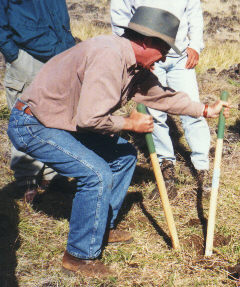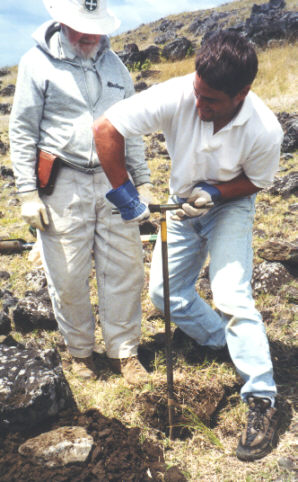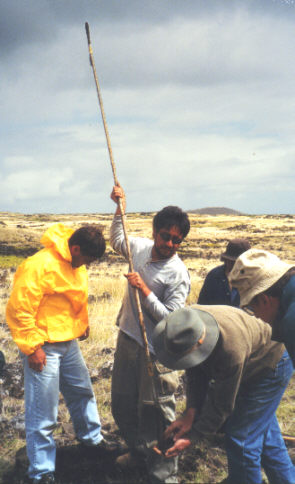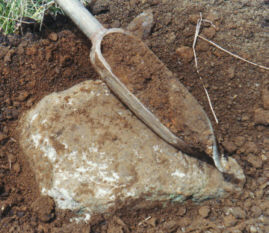We accomplished the coring in two stages, beginning with a post hole digger and going as deep as we could. Chris takes his turn at right. He told us how he walked around the island with a tool like this recording core information for his doctoral thesis. We used the hole digger until the hole reached about two feet deep. At this depth the narrow opening made operating the tool very difficult.





